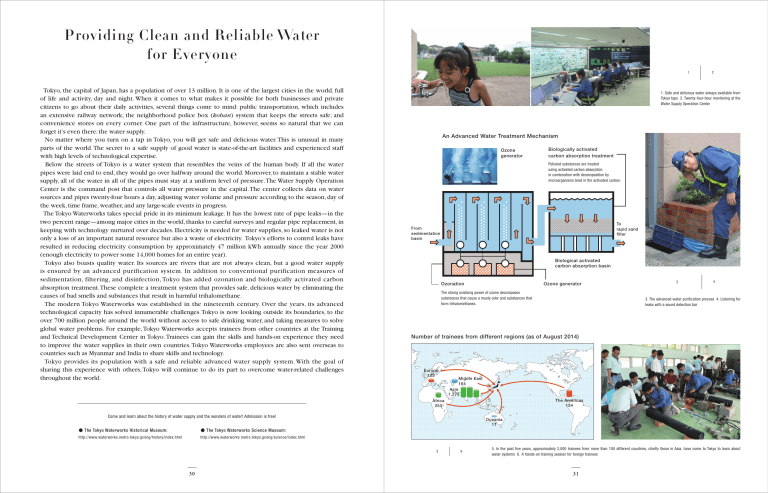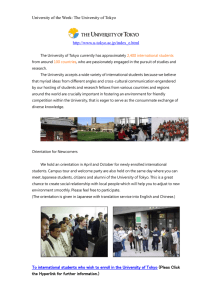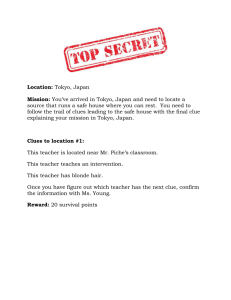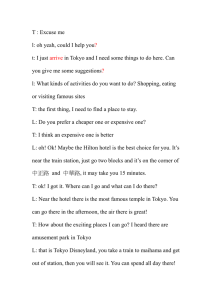Providing Clean and Reliable Water for Everyone

Providing Clean and Reliable Water for Everyone
Tokyo, the capital of Japan, has a population of over 13 million. It is one of the largest cities in the world, full of life and activity, day and night. When it comes to what makes it possible for both businesses and private citizens to go about their daily activities, several things come to mind: public transportation, which includes an extensive railway network; the neighborhood police box ( koban ) system that keeps the streets safe; and convenience stores on every corner. One part of the infrastructure, however, seems so natural that we can forget it’s even there: the water supply.
No matter where you turn on a tap in Tokyo, you will get safe and delicious water. This is unusual in many parts of the world. The secret to a safe supply of good water is state-of-the-art facilities and experienced staff with high levels of technological expertise.
Below the streets of Tokyo is a water system that resembles the veins of the human body. If all the water pipes were laid end to end, they would go over halfway around the world. Moreover, to maintain a stable water supply, all of the water in all of the pipes must stay at a uniform level of pressure. The Water Supply Operation
Center is the command post that controls all water pressure in the capital. The center collects data on water sources and pipes twenty-four hours a day, adjusting water volume and pressure according to the season, day of the week, time frame, weather, and any large-scale events in progress.
The Tokyo Waterworks takes special pride in its minimum leakage. It has the lowest rate of pipe leaks—in the two percent range—among major cities in the world, thanks to careful surveys and regular pipe replacement, in keeping with technology nurtured over decades. Electricity is needed for water supplies, so leaked water is not only a loss of an important natural resource but also a waste of electricity. Tokyo’s efforts to control leaks have resulted in reducing electricity consumption by approximately 47 million kWh annually since the year 2000
(enough electricity to power some 14,000 homes for an entire year).
Tokyo also boasts quality water. Its sources are rivers that are not always clean, but a good water supply is ensured by an advanced purification system. In addition to conventional purification measures of sedimentation, filtering, and disinfection, Tokyo has added ozonation and biologically activated carbon absorption treatment. These complete a treatment system that provides safe, delicious water by eliminating the causes of bad smells and substances that result in harmful trihalomethane.
The modern Tokyo Waterworks was established in the nineteenth century. Over the years, its advanced technological capacity has solved innumerable challenges. Tokyo is now looking outside its boundaries, to the over 700 million people around the world without access to safe drinking water, and taking measures to solve global water problems. For example, Tokyo Waterworks accepts trainees from other countries at the Training and Technical Development Center in Tokyo. Trainees can gain the skills and hands-on experience they need to improve the water supplies in their own countries. Tokyo Waterworks employees are also sent overseas to countries such as Myanmar and India to share skills and technology.
Tokyo provides its population with a safe and reliable advanced water supply system. With the goal of sharing this experience with others, Tokyo will continue to do its part to overcome water-related challenges throughout the world.
Come and learn about the history of water supply and the wonders of water! Admission is free!
The Tokyo Waterworks Historical Museum: http://www.waterworks.metro.tokyo.jp/eng/history/index.html
The Tokyo Waterworks Science Museum: http://www.waterworks.metro.tokyo.jp/eng/science/index.html
30
1 2
1. Safe and delicious water always available from
Tokyo taps 2. Twenty-four-hour monitoring at the
Water Supply Operation Center
An Advanced Water Treatment Mechanism
Ozone generator
Biologically activated carbon absorption treatment
Polluted substances are treated using activated carbon absorption in combination with decomposition by microorganisms bred in the activated carbon.
From sedimentation basin
Biological activated carbon absorption basin
Ozonation
The strong oxidizing power of ozone decomposes substances that cause a musty odor and substances that form trihalomethanes.
Ozone generator
To rapid sand filter
3 4
3. The advanced water purification process 4. Listening for leaks with a sound detection bar
Number of trainees from different regions (as of August 2014)
Europe
122
Africa
253
Asia
1,273
Middle East
164
Oceania
11
5 6
The Americas
134
5. In the past five years, approximately 2,000 trainees from more than 100 different countries, chiefly those in Asia, have come to Tokyo to learn about water systems 6. A hands-on training session for foreign trainees
31



